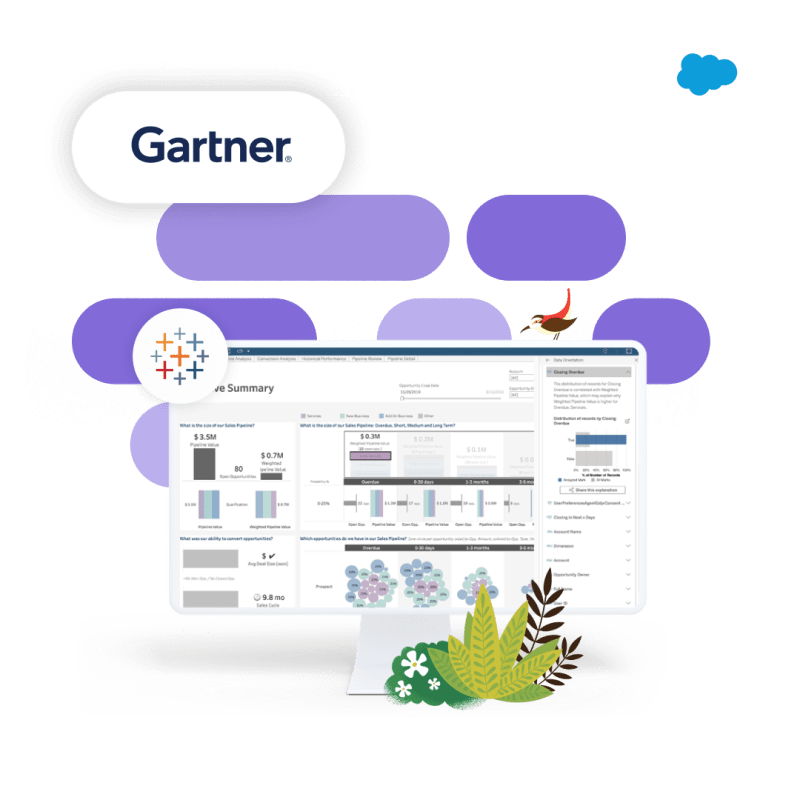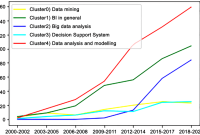Is Crm A Business Intelegence Tool – By clicking Continue to join or log in, you agree to the User Agreement, Privacy Policy and Cookie Policy.
Companies today are showing significant ingenuity in improving their efficiency by focusing on key aspects such as customer relationship management (CRM) and sales processes. As an entrepreneur, in my own company and supporting many clients over the last two decades, I have gained a lot of experience in this area, integrating tools like CRM and sales tools with business intelligence (BI). An important component for maximizing business results.
Is Crm A Business Intelegence Tool
Let’s take a closer look at the reasons behind implementing these tools with BI and the resulting synergies.
Boosting Business Intelligence Through Crm And Erp Integration
As a focal point, CRM has a huge impact on creating customer experiences. Beyond its traditional contact management role, CRM offers many features and benefits that you can use to improve organizational performance:
In-depth data analysis: In addition to closely tracking contacts, CRM offers advanced analysis capabilities. By developing these skills, you can not only assess customer behavior, but also anticipate market trends and adjust your strategy accordingly. Advanced contact personalization: CRM’s ability to personalize contacts isn’t just a matter of loyalty; It is also a driver for driving growth by creating personalized experiences. Integration with marketing tools: You can integrate CRM with marketing tools to maximize its efficiency. This allows for a consistent approach from lead generation to conversion, guaranteeing a nearly seamless experience.
Sales tools, suitable for CRM, are integrated solutions dedicated to improving sales performance. These include lead management platforms, sales automation tools, and performance tracking systems.
Often, the synergy between your CRM and sales tools creates a winning combination, where customer relationship management is seamlessly integrated with sales strategy. This integration gives you a comprehensive view of the sales pipeline: from the first contact with a prospect to the end of the transaction, providing a deep understanding of the customer journey. All of these tools work to achieve the same goal: increasing operational efficiency and driving a company’s business growth.
The Role Of Machine Learning And Artificial Intelligence In Crm Software
Personalize interactions: With detailed data on customer preferences and behavior, you can shape your approach with targeted recommendations and personalized offers. Automating repetitive tasks: This allows you to focus on activities that add the most value. Data analysis: Leveraging CRM analytical capabilities helps you understand market trends, assess sales team performance, and make better decisions thanks to the granularity of the data collected.
In addition to CRM integration and sales tools, BI unlocks the ability to extract relevant insights from the data collected by these tools and understand performance at a deeper level.
BI is more than simple data collection; It converts raw data into meaningful information. Using state-of-the-art technology, processes and tools, BI provides a comprehensive view of the business and offers many benefits:
Anticipate trends: BI can predict market trends by analyzing past and current data, helping you stay ahead of the competition. Process Optimization: BI helps improve internal processes and increase operational efficiency by identifying inefficiencies and improvement opportunities. Strategic decision making: BI intelligence guides strategic decisions by providing deep understanding of organizational performance, enabling rapid strategy adjustments. Responsive to market changes: Thanks to real-time analytics, BI helps you adapt quickly to market changes, making your organization more agile. Goal Alignment: BI ensures that goals are aligned with actual results, thereby strengthening consistency in achieving organizational goals.
Emerging Business Intelligence Tools
Aligning your CRM, sales tools, and BI is critical to getting the most out of these tools, and optimal integration is critical for smooth communication between the two. In addition to clearly defining your specific goals, choosing a platform that unifies all your data is critical to getting the most out of data centralization. Dashboard tools are very useful in bringing data together in one place, simplifying information management and analysis.
Choosing a sales tool with a CRM and API is also important, allowing for seamless integration with your data-centric platform. Closed platforms that don’t facilitate data flow prevent alignment between your various tools. This step usually requires developer expertise to ensure optimal connectivity and harmonious collaboration between systems.
Lastly, a thorough understanding of your business goals is essential before moving on to the practical stage. It is true, comprehensive integration primarily depends on the proper definition of these goals, which will guide you throughout the integration process.
Advanced Customer Segmentation: Use your CRM’s segmentation capabilities to create more precise customer groups based on similar purchasing behavior to personalize offers. Sales Automation Scenarios: Set up sales automation scenarios by configuring personalized emails based on customer actions in CRM. Customer Reactivation Campaigns: Through your CRM, launch targeted reactivation campaigns to re-engage inactive customers. Find personalized incentives to encourage potential purchases. BI Dashboards: Helps you set up customized dashboards for each department, highlighting key performance indicators (KPIs) for faster decision making, and shortening your sales cycles. BI and Benchmarking: Use BI to compare your company’s performance to that of competitors and adjust strategies accordingly. Brainstorming and BI: Hold brainstorming sessions based on BI reports. Identify growth opportunities, trends and necessary strategic changes.
What Is Business Intelligence And Analytics?
Strategic implementation of CRM and sales tools is emerging as a powerful driver for improving organizational performance. This, combined with BI that unlocks the potential of your data, can give you clearer visibility, strategic agility, and the ability to thrive in an ever-changing business environment.
Please mark contributions as unhelpful if they are not relevant or valuable to the article. These comments are private to you and will not be shared publicly. From data to report in a minute or less. BI Launched! 🚀 Get started for free.
Intelligence, predicting trends, and understanding the intricacies of the market can determine whether someone is successful or stagnant. A superpower called BI covered it up.
In today’s business landscape, understanding the nuances of business intelligence (BI) and analytics is no longer an option; It’s mandatory. This comprehensive study examines BI and analytics, explaining their layers, evolution, components, and applications.
Operational Crm Explained: Definition & Top 13 Crm Tools
At its core, business intelligence (BI) refers to the processes, technologies, and tools that turn raw data into meaningful insights. This empowers businesses to make informed decisions by leveraging the wealth of information they generate every day.
From providing historical data analysis to decision makers to predicting future trends, BI has diverse objectives. The main goal is to improve business performance by improving processes and increasing profitability.
BI gets its lifeblood from data, and the business analyst’s job is to find that data and connect the dots. Data sources can range from internal databases to external data providers, all of which contribute to a comprehensive view of business operations.
Data warehousing is the collection, storage and organization of data in a structured manner. A business intelligence database serves as the foundation for your BI solution. Ensure instant availability of business intelligence dashboards for advanced analysis.
Tableau Business Intelligence Tool Salesforce Business Profile Diagrams Pdf
Data integration is integrating your data from different sources and making it compatible and coherent. This step is necessary to create integrated business intelligence data analyzes and reports for the application.
In the world of big data analysis, presenting information in a format that is easy to understand visually is paramount. Data visualization tools transform complex data into charts, graphs, and dashboards, enabling rapid understanding. This is very important for optimizing business strategies for decision making because it can provide many business intelligence benefits.
Reporting tools are the storytellers of the BI world and most BI software. They produce reports that communicate insights to decision makers in a clear and actionable way. You need to analyze your competitive advantage in intelligence software using best practices and business intelligence fundamentals.
Data warehousing is not just a byproduct of business operations; It’s an asset. Its proper use can bring about big changes, driving innovation and uncovering opportunities hidden by business intelligence software.
Tools For Hr Business Analytics Data Warehouse And Data Marts Business Intelligence Introduction Pdf
Just as physical assets like real estate or machines have value, data science also has intrinsic value. Its value lies in the insight it provides, which leads to better decision making.
The three Vs of big data—volume, variety, and velocity—highlight challenges and opportunities. Business intelligence vs analytics and reporting is connected to the volume of data generated every day.
Make sure your data is neatly organized so business intelligence analysts can perform business analysis. The separation between structured (e.g. databases) and unstructured (e.g. customer feedback) data is important for effective analysis.
The old adage “garbage in, garbage out” also applies in BI competitive intelligence. Data quality and integrity are critical to ensuring that analysis can produce reliable intelligence. To have a good dashboard example, your business intelligence tool must have quality data.
Business Intelligence: What It Is And How To Build A Strategy
Data analysis involves the formal study of data to extract meaningful form, intelligence, and knowledge. It is the process of converting raw data into functional information.
“What has happened?” Bi focuses on explanatory statements and responding to the questions. and “what happens now?” This helps monitor company efficiency and make decisions based on past and current data.
On the other hand, analytics is a broad field that examines data to detect shapes, trends, and intelligence. This is beyond historical and current data, “Why did this happen?” Aims to answer such questions. and “What could happen in the future?”
Remember: BI Activation is a rehabilitation system. Be prepared to change
Top 15 Business Intelligence Tools (bi Tools)
What is a business crm, is asana a crm tool, what is crm in business, what is a crm tool, best crm tool for small business, free crm tool for small business, is servicenow a crm tool, crm tool for small business, what is business crm, is jira a crm tool, is zendesk a crm tool, what is crm tool




